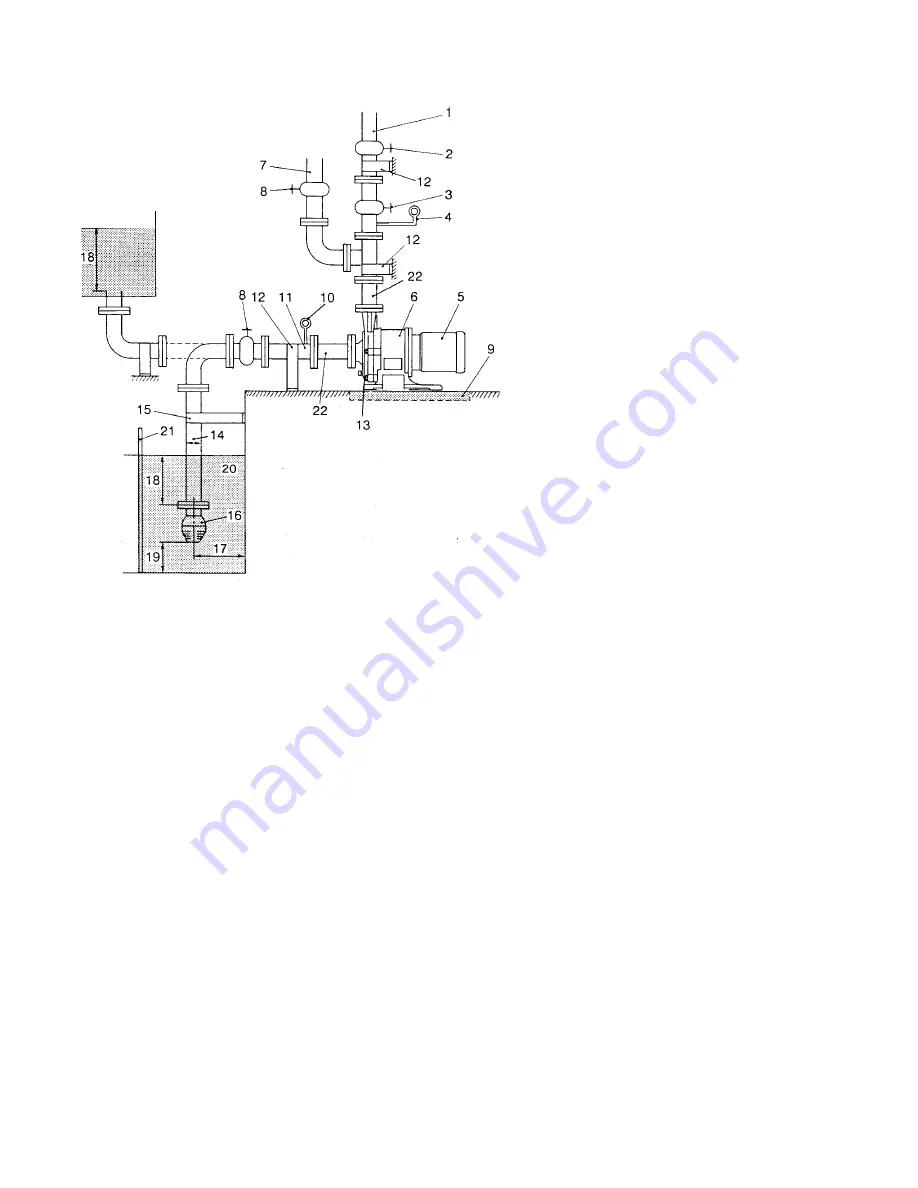
n
8
1. The suction pipe should employ the flooded suction method if possible. The shortest pipe possible, with
the minimum number of bends, should be designed. Arrange a proper support on the suction pipe so that
the load and the thermal stress of the pipe itself are not applied to the pump.
2. Attach the coupling on the suction pipe carefully, so that no air enters the line. The presence of air in the
suction pipe may prevent priming of the pump.
3. Avoid installations with poor suction conditions (e.g. vacuum in suction tank, large suction head or long
suction piping). NPSHa should always be at least 2 feet greater than NPSHr. For NPSHr values, refer to
the standard performance curve for your pump model or contact Iwaki Walchem or your distributor.
4. When using a bend on the suction side, install a straight pipe which is more than 20 inches long or 10
times as long as the suction port diameter before the suction port of the pump. Use the largest possible
radius of curvature for the bend.
5. Do not allow any projection where air may be trapped along the suction pipe. The suction pipe should
have an ascending gradient toward the pump.
n
Suction Piping
n
Piping
1. Discharge pipe (Use a support to keep the
pump free from the load of the pipe.)
2. Gate valve
3. Check valve
4. Pressure gauge
5. Motor
6. Pump
7. Priming pipe
8. Gate valve
9. Drain ditch
10. Compound gauge
11. Suction pipe (D=Diameter of pipe) (Shortest
horizontal section with an ascending gradient
toward the pump)
12. Pipe support
13. Pump drain (not applicable to MDH-(F))
14. Suction pipe (D=Diameter of pipe)
15. Suction pipe stabilizer brace (Used if the
suction pipe is particularly long.)
16. Foot valve
17. 1.5D or more
18.18 inches or more
19. 1- 1.5D or more (if sediment accumulates
easily)
20. Suction tank
21. Screen
22. Short pipe
Fig. 4

























